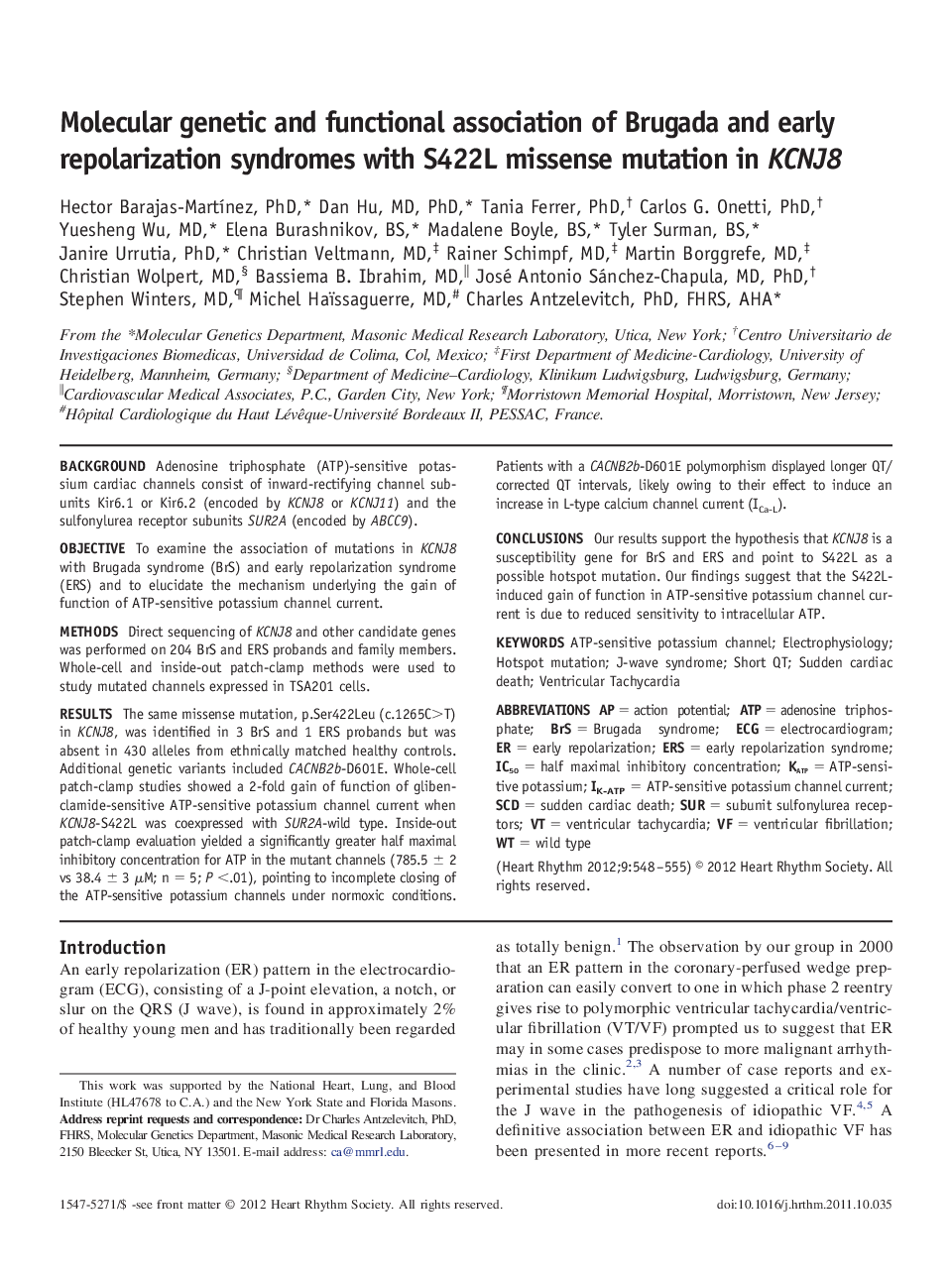| Article ID | Journal | Published Year | Pages | File Type |
|---|---|---|---|---|
| 2923131 | Heart Rhythm | 2012 | 8 Pages |
BackgroundAdenosine triphosphate (ATP)-sensitive potassium cardiac channels consist of inward-rectifying channel subunits Kir6.1 or Kir6.2 (encoded by KCNJ8 or KCNJ11) and the sulfonylurea receptor subunits SUR2A (encoded by ABCC9).ObjectiveTo examine the association of mutations in KCNJ8 with Brugada syndrome (BrS) and early repolarization syndrome (ERS) and to elucidate the mechanism underlying the gain of function of ATP-sensitive potassium channel current.MethodsDirect sequencing of KCNJ8 and other candidate genes was performed on 204 BrS and ERS probands and family members. Whole-cell and inside-out patch-clamp methods were used to study mutated channels expressed in TSA201 cells.ResultsThe same missense mutation, p.Ser422Leu (c.1265C>T) in KCNJ8, was identified in 3 BrS and 1 ERS probands but was absent in 430 alleles from ethnically matched healthy controls. Additional genetic variants included CACNB2b-D601E. Whole-cell patch-clamp studies showed a 2-fold gain of function of glibenclamide-sensitive ATP-sensitive potassium channel current when KCNJ8-S422L was coexpressed with SUR2A-wild type. Inside-out patch-clamp evaluation yielded a significantly greater half maximal inhibitory concentration for ATP in the mutant channels (785.5 ± 2 vs 38.4 ± 3 μM; n = 5; P <.01), pointing to incomplete closing of the ATP-sensitive potassium channels under normoxic conditions. Patients with a CACNB2b-D601E polymorphism displayed longer QT/corrected QT intervals, likely owing to their effect to induce an increase in L-type calcium channel current (ICa-L).ConclusionsOur results support the hypothesis that KCNJ8 is a susceptibility gene for BrS and ERS and point to S422L as a possible hotspot mutation. Our findings suggest that the S422L-induced gain of function in ATP-sensitive potassium channel current is due to reduced sensitivity to intracellular ATP.
